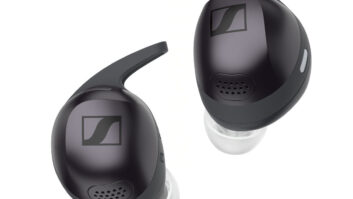If cash is king for investors when the stock market is down, then cash flow in king for custom installers when the economy is down, dealers were told during the recent PARA conference.
Even in good times, “cash flow is more of an issue as you diversify into custom,” said consultant Robert Macfarlane. Poor cash flow forced some custom installers to close their doors even before the current economic slowdown, suppliers noted.
To improve cash flow, Macfarlane advised installation companies to focus on selling systems that can be installed efficiently. In part, that means selling from a short menu of standardized packages instead of customizing every project for every customer.
Installers must also manage contracts and advances effectively by making an employee responsible for these efforts, he continued. And project closure must be managed so that within 48 hours of a project’s completion, it is reconciled and billed.
If collections are managed every day, he added, “with three months of effort, you can get past ARs under control.”
Such efforts are critical, he said, because the cash-flow requirements of retail stores and custom-install divisions are markedly different. Retail is a cash-and-carry business with many variable costs that decline when sales decline, he explained. Commissioned salespeople, for example are paid less if sales fall, and inventory can be pared when sales slack off, he pointed out.
Custom operations, in contrast, have more fixed overhead because they employ fixed-salary project managers and custom installers, and they must operate and maintain trucks to cart products and installers to customers’ homes. Custom companies must also contend with installations that stretch out from three to six months.
Multiple outside factors also affect a custom business’ cash flow, he added, but their impact can be minimized.
One basic tool for maximizing cash flow and building profit is a formal bid-review process to ensure that the bid’s system design, labor estimate and margin calculation are correct before the bid is delivered to the potential customer, Macfarlane said.
A daily labor-utilization report is also a must, he said. The report compares the billable hours of each technician, system designer and installer to their total employment hours. “If an installer is paid $25 an hour, you don’t want to send him to Home Depot for clips,” he noted. The report will determine what each employee is producing, whether it’s profitable and whether too many installers or designers are employed.
After-the-fact job-cost reviews should be implemented, he added, to determine why actual costs might have exceeded bid costs. Late product availability could be a culprit, as well as poor system design that “takes three weeks to get to work” and requires multiple unanticipated repeat visits by a technician.
Custom companies should also dedicate one person to manage contracts, which define customer expectations and prevent misunderstandings that could escalate job costs, he said. Contract management includes the collection of advances, collection of time payments and account reconciliation. “Three weeks after a job is finished, some companies are still reconciling accounts and have delayed billing,” Macfarlane said.
Managing product availability is another way to smooth out cash flow, he said. Last-minute scrambles to obtain products not included in a bid could be avoided with a bid-review process, he said. Companies should also plan for potential model changes. “A job is scheduled for three months away, and a new model replaces the TV you already have in inventory,” he said in outlining one potential scenario. “The customer wants the new model, but it doesn’t fit into the cabinet that you built.”
Another way to manage customer whims is to insist on change orders, he said. “Most companies ignore this, so they lose profits.”
Other product-related problems occur when companies stage products for jobs on the day of installation and find out that pieces are missing.
Companies should also require daily project reports from its installers. If a job is tracked, he said, a company wouldn’t have to send someone to a site before sending out the final bill.
Macfarlane also advised installation companies to implement a project-closure procedure. Customers should be asked to sign off a punch list reviewed with a company employee, he said.













